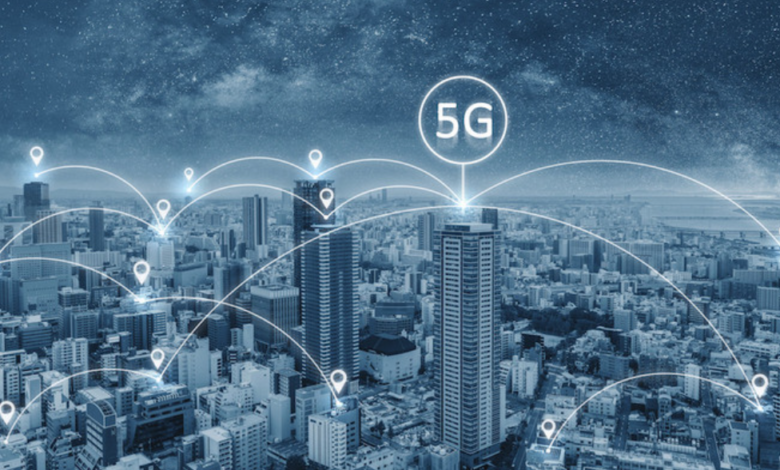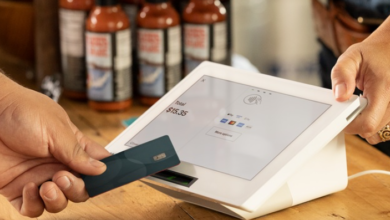How 5G Technology is Revolutionizing Communication

Introduction
The world of telecommunications is on the brink of a major transformation, and at the heart of this shift is 5G technology. With its promise of faster speeds, lower latency, and higher connectivity, 5G is expected to revolutionize the way we communicate, work, and live. In this article, we explore how 5G is shaping the future of communication and the various ways it will impact different industries.
What is 5G Technology?
5G is the fifth generation of wireless technology, following 4G. It offers improved speed, connectivity, and reliability compared to its predecessors. While 4G has already provided significant improvements over older technologies like 3G, 5G takes these capabilities to the next level. With speeds that are up to 100 times faster than 4G, 5G enables near-instantaneous data transfer, which opens the door for a new era of communication and innovation.
Key Benefits of 5G Technology
Faster Speeds
One of the most noticeable advantages of 5G is its incredible speed. While 4G allows for speeds up to 1 Gbps (gigabit per second), 5G can offer speeds up to 10 Gbps or higher. This means downloading high-definition movies, streaming 4K content, and participating in video calls will be smoother and faster than ever before. These speeds will not only improve everyday consumer experiences but also enable new applications in fields like gaming, virtual reality (VR), and augmented reality (AR).
See also: Geekzilla.Tech Honor Magic 5 Pro
Lower Latency
Latency refers to the delay between sending and receiving data. In the case of 5G, latency is dramatically reduced to as low as 1 millisecond, compared to 30-50 milliseconds with 4G. This improvement will have a profound impact on real-time communication, particularly in applications that require instant responses, such as remote surgery, autonomous vehicles, and online gaming. The reduced latency will also enhance experiences in VR and AR, making them more immersive and responsive.
Increased Connectivity and Bandwidth
5G is designed to handle a much larger number of devices connected to the network simultaneously. As the world becomes increasingly connected through the Internet of Things (IoT), 5G will support billions of devices communicating with each other. The increased bandwidth means that even in densely populated areas or at large-scale events, networks will remain stable and efficient.
Applications of 5G Technology
Smart Cities and Urban Infrastructure
5G will play a crucial role in the development of smart cities. With faster data transfer speeds, low latency, and high connectivity, urban infrastructure such as traffic lights, waste management systems, and energy grids can be connected in real-time, enabling more efficient operations. For instance, traffic lights can adjust based on the flow of traffic, and smart meters can monitor energy usage in real-time, contributing to more sustainable urban living.
Healthcare and Remote Care
One of the most significant areas where 5G will have a profound impact is healthcare. The ultra-low latency of 5G networks makes remote surgeries and telemedicine feasible. Doctors can perform operations remotely with the help of robotics, where even a tiny delay could jeopardize the procedure. Furthermore, 5G will facilitate faster data transfer of medical images like X-rays and MRIs, enabling quicker diagnoses and treatment plans.
Additionally, wearable devices connected to 5G networks will provide real-time monitoring of vital signs, making it easier to manage chronic conditions and offer personalized care. In emergency situations, paramedics could instantly transmit patient data to hospitals, allowing medical teams to prepare before the patient arrives.
Autonomous Vehicles
Self-driving cars are heavily reliant on data, and 5G is set to be a game-changer in this space. The speed and low latency of 5G will enable vehicles to communicate with each other and infrastructure in real-time, ensuring safe and efficient travel. This real-time communication will allow for better traffic management, fewer accidents, and more efficient routes. Autonomous vehicles will rely on 5G for navigation, sensor data, and collaboration with other vehicles to avoid obstacles and respond to changing road conditions.
Enhanced Consumer Entertainment
5G will revolutionize entertainment and media consumption. With faster download speeds and lower latency, streaming services will be able to deliver 4K and even 8K video with virtually no buffering. This will open the door to more immersive forms of entertainment, such as virtual reality (VR) and augmented reality (AR), which require high bandwidth and low latency to function properly.
The gaming industry, in particular, will benefit from 5G technology. Cloud gaming, which relies on streaming video game content from remote servers, will be much smoother, allowing gamers to experience high-quality gameplay without needing powerful hardware. This will democratize gaming, making it accessible to more people across different devices, including smartphones and tablets.
Industrial Automation and the Internet of Things (IoT)
Industries such as manufacturing, logistics, and agriculture will be transformed by 5G. With the ability to connect a vast number of IoT devices, factories can operate more efficiently, with real-time monitoring and predictive maintenance. For instance, sensors embedded in machinery can send data to the cloud, alerting operators about potential failures before they happen, thus reducing downtime and increasing productivity.
In logistics, 5G will improve tracking and monitoring of goods in transit, helping companies optimize routes and delivery times. For agriculture, 5G-enabled sensors can provide data on soil conditions, weather patterns, and crop health, leading to more precise and efficient farming practices.
Challenges and Considerations
While 5G promises numerous benefits, its rollout presents several challenges. One of the main obstacles is the cost and complexity of infrastructure. Installing 5G networks requires significant investments in new hardware, such as small cells, fiber optics, and base stations, which can be expensive and time-consuming.
There are also concerns about the security of 5G networks, especially given the increased connectivity between devices and industries. Ensuring that 5G networks are secure from cyber threats will be paramount as the technology becomes more widespread.
The Future of 5G
As 5G networks continue to roll out globally, we can expect to see even more transformative applications emerge. While the initial focus is on improving communication and internet speeds, the true potential of 5G lies in its ability to connect devices and systems in new and innovative ways. From smart cities to autonomous vehicles and remote healthcare, 5G will be at the core of the next wave of technological innovation.
Conclusion
5G is set to revolutionize the way we connect, communicate, and interact with the world around us. With its speed, low latency, and high connectivity, 5G technology will unlock new opportunities across various industries, from healthcare to entertainment and beyond. While challenges remain, the long-term benefits of 5G will undoubtedly change the landscape of communication and technology as we know it.






